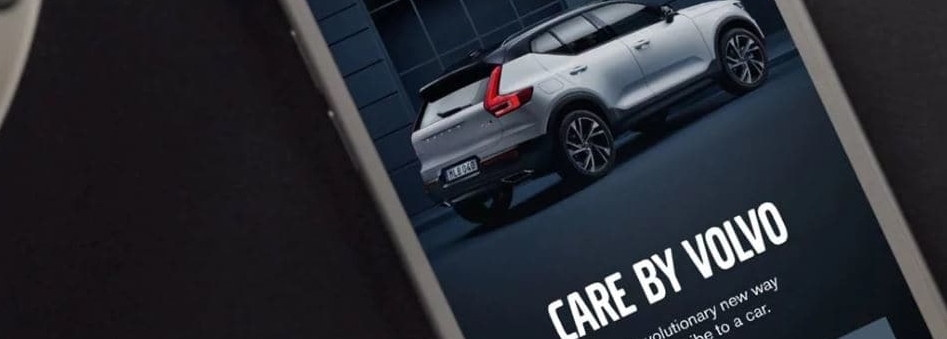179. Mark Packard On Entrepreneurial Valuation, Part 2: How Entrepreneurs Create Value
There is an excellent, deeply researched, Austrian economics-founded theory of customer value: the value learning cycle, which we explored thoroughly in Episode #178 (Mises.org/E4B_178). How do entrepreneurs and executives apply that theory to create customers, delight them, and grow strong brands and businesses? That’s the subject of the second part of Mark Packard’s business handbook for value creation, Entrepreneurial Valuation: An Entrepreneur’s Guide To Getting Into The Minds Of Customers (Mises.org/E4B_179_Book).
Key Takeaways and Actionable Insights
Entrepreneurs can’t directly access the customer’s mental model, but they can apply empathy to run simulations.
Entrepreneurial empathy is the ability to see the world through the mental model of the customer. We all see the world through mental models rather than directly, and each of us has our own, unique mental model. But mental models can also be shared and aligned. A mental model is a way of thinking about real situations or about the real world. It’s quite possible to describe someone else’s mental model. We can first ask them questions (“How do you think about your current situation?” “What do you do when the car you drive gets to 50,000 miles on the odometer?”) and then run hypotheses or ideas through the model that emerges (“How do you like this?”, “How does this make you feel?”, “Would you buy this product?”)
Empathy is knowledge-based, and therefore can be practiced by any entrepreneur.
It’s not the case that some people are more capable of empathy than others. Since empathy is knowledge-based, it can be learned, developed, and trained. It’s a process of filling different buckets of knowledge about your customer. There’s factual knowledge about them, as well as factual knowledge about their consumption or usage (e.g., location, frequency, any reports, or ratings they’ve provided). And then there’s experiential knowledge — what an experience felt like to them.
Only the customer has this experiential knowledge, only they can feel it. But if the entrepreneur can understand the customer’s mental model, it’s possible to simulate what that experience might feel like — feel what they feel. It’s possible to get closer and closer by experiencing it yourself: eating the food you’re offering them or the beverage you’ve designed, using their mental model rather than your own. The customer’s experiential knowledge is tacit — it can’t be communicated directly — but entrepreneurs can get closer to it through simulation, and interpret it through empathic technique.
Be aware that there is always the risk of what Mark calls interpretive loss — we listen or observe but we don’t interpret the data properly or fully. Our downloadable pdf provides direction on where interpretive loss occurs and how to safeguard against it.
There are some techniques to reinforce the accuracy of empathic investigation.
- Lead users: In every category, there are users who feel needs and experience unsatisfaction / dissatisfaction more intensely. Give investigative priority to them.
- Contextual in-depth interviews: Communication can be more productive using specific techniques from our E4B tools library. The contextual in-depth interview technique is one of our useful tools.
- Ethnographic deduction: Ethnography is the technique of observing users in action. It’s a better tool than a survey or questionnaire — what users do is more informative than what they say when answering surveys. Researchers deduce motivations from observation.
- Behavioral data: Some data streams can be the equivalent of ethnography — observing users buying or searching as an indicator of their needs, preferences, and concerns.
- Entrepreneurs can also learn from themselves: We are all both consumers and producers. In the categories that are most important to you, observe your own behavior as a user. Be aware of your concerns as a customer. Make your empathy channel customer-to-customer.
From value propositions to innovation.
Developing a value proposition is a problem-finding process. Designing an innovation is a problem-solution process.
Problem-finding is the development of knowledge of a problem to be solved from the customer’s perspective, using the experiential learning from the mental modeling exercise. A problem is not the same as a need — it’s a specific gap in the solution landscape of products and services from which the customer can choose, a gap that can be filled with a new solution yet to be identified but capable of identification.
Problem-solving is the application of resource knowledge and technical knowledge to identify a new solution. The entrepreneur must navigate multiple uncertainties to arrive at a solution — demand uncertainty (is there real demand?), technical uncertainty (will it work?), resource uncertainty (will I be able to gather the resources to get to a solution?), capability uncertainty (can I do this?), and competitive uncertainty (will someone else beat me to it?).
Mark’s book includes a multi-step process for problem-solution creativity. One of the most interesting is knowledge combining.
What’s a pancake boat? It’s a combination of two very basic words and ideas that represents the potential for something new. Perhaps a very flat-profile boat for floating under low bridges. Or a breakfast barge touring the harbor. The point is the combination. When entrepreneurs can combine technological knowledge with problem knowledge, it’s possible to invent a new solution without inventing a new technology.
Mark has two suggestions to help with knowledge combining. One is to become interested in technologies. If you are having a hard time devising a solution, it’s probably because you are not familiar enough with technologies that are already available to do so. Find tech websites that can keep you up-to-date on the latest discoveries and applications. The more you understand about the properties and capabilities of resources and technologies, the better you can leverage those properties and what they do.
The second suggestion is a specific method. List as many different resources, technologies, and skills that you know about — software skills, hardware skills, people skills, technologies you’ve worked with, processes you’ve worked with, etc. Keep the list updated.
Then turn to the problem you are trying to solve. Mentally step through all the resources on your list and bring each of them into active memory. Try to think of a possible solution using each one. Keep going through the whole list. You’re bringing technical knowledge schemas forward while holding your problem knowledge in active memory.
Do any of the solutions stand out? Are there any that are truly outside-the-box? Are any of them impossible with current technology? That’s good. Do more research. You might find a breakthrough answer.
It takes time, commitment, and resources, but when you are passionate about the entrepreneurial process the effort will pay off big time.
Entrepreneurs get inside the mind of the customer to make the world a better place.
The goal of entrepreneurship is to enhance and improve the state of well-being experienced by customers. To achieve this goal, entrepreneurs aim to understand the customer’s mental model, and run creative solutions — potential futures — through it to simulate the customer’s new experience. It’s a counter-factual exercise, but entrepreneurs can improve their capacity, and their odds of success, with practice, commitment, and the use of some of the cognitive techniques Mark Packard recommends.
Additional Resources
“Contextual In-depth Interview Technique” (PDF): Mises.org/E4B_179_PDF
“Interpretive Value Learning” (PPT): Mises.org/E4B_179_PPT
Entrepreneurial Valuation: An Entrepreneur’s Guide To Getting Into The Minds Of Customers by Mark Packard: Mises.org/E4B_179_Book








Leave a Reply
Want to join the discussion?Feel free to contribute!